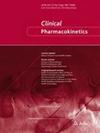Clinical pharmacokinetics and pharmacodynamics of linagliptin.
Abstract
Linagliptin is an orally active small-molecule inhibitor of dipeptidyl peptidase (DPP)-4, which was first licensed in the US, Europe, Japan and other territories in 2011 to improve glycaemic control in adults with type 2 diabetes mellitus. Linagliptin is the first and thus far the only DPP-4 inhibitor, and oral antihyperglycaemic drug in general, to be approved as a single-strength once-daily dose (5 mg). Compared with other available DPP-4 inhibitors, linagliptin has a unique pharmacokinetic/pharmacodynamic profile that is characterized by target-mediated nonlinear pharmacokinetics, concentration-dependent protein binding, minimal renal clearance and no requirements for dose adjustment for any intrinsic or extrinsic factor. After single or multiple oral doses of 1-10 mg, linagliptin displays less than dose-proportional increases in maximum plasma concentration (C(max)) and area under the plasma concentration-time curve (AUC). Linagliptin is rapidly absorbed after oral administration, with C(max) occurring after approximately 90 minutes, and reaches steady-state concentrations within 4 days. With the therapeutic dose, steady-state C(max) (11-12 nmol/L) and AUC (~150 nmol · h/L) are approximately 1.3-fold greater than after a single dose, indicating little drug accumulation with repeat dosing. Linagliptin exhibits concentration-dependent protein binding in human plasma in vitro (99% at 1 nmol/L to 75-89% at >30 nmol/L) and has a large apparent volume of distribution, demonstrating extensive distribution into tissues. The nonlinear pharmacokinetics of linagliptin are best described by a two-compartmental model that incorporates target-mediated drug disposition resulting from high-affinity, saturable binding to DPP-4. The oral bioavailability of linagliptin estimated with this model is approximately 30%. Linagliptin has a long terminal half-life (>100 hours); however, its accumulation half-life is much shorter (approximately 10 hours), accounting for the rapid attainment of steady state. The majority of linagliptin is eliminated as parent compound, demonstrating that metabolism plays a minor role in the overall pharmacokinetics in humans. The main, pharmacologically inactive S-3-hydroxypiperidinyl metabolite accounted for approximately 17% of the total drug-related compounds in plasma. Linagliptin is eliminated primarily in faeces, with only around 5% of the oral therapeutic dose excreted in the urine at steady state. Linagliptin potently inhibits DPP-4 (inhibition constant 1 nmol/L), and trough drug concentrations achieved with therapeutic dosing inhibit >80% of plasma DPP-4 activity, the threshold associated with maximal antihyperglycaemic effects in animal models. There are no clinically relevant alterations in linagliptin pharmacokinetics resulting from renal impairment, hepatic impairment, coadministration with food, race, body weight, sex or age. In vitro, linagliptin is a weak substrate and weak inhibitor of cytochrome P450 (CYP) 3A4 and permeability glycoprotein (P-gp) but not of other CYP isozymes or ATP-binding cassette transporters. Clinical studies have revealed no relevant drug interactions when coadministered with other drugs commonly prescribed to patients with type 2 diabetes, including the narrow therapeutic index drugs warfarin and digoxin. Linagliptin plasma exposure is reduced by potent inducers of CYP3A4 or P-gp. Linagliptin has demonstrated a large safety window (>100-fold the recommended daily dose) and clinically relevant antihyperglycaemic effects in patients with type 2 diabetes.





